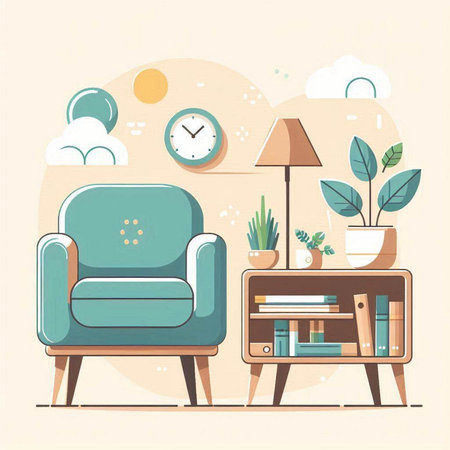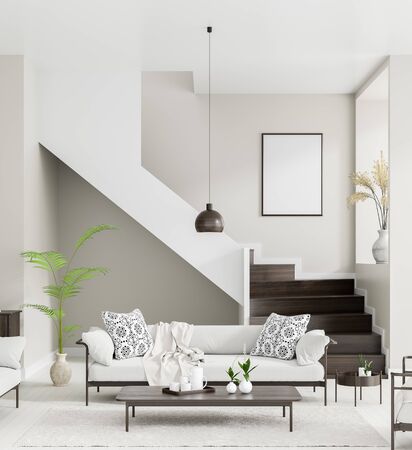1. Understanding the Appeal of Neutrals
When it comes to home design, neutral color schemes have long been a staple in American households. There’s a good reason for their popularity: neutrals like beige, gray, white, and taupe offer a sense of calm, balance, and sophistication that feels welcoming and safe. These shades act as a blank canvas, making it easy to switch up décor styles or add seasonal accents without clashing colors. For busy families or anyone seeking timeless style, neutrals are practical—they don’t go out of fashion quickly and are forgiving when life gets messy. Plus, they make spaces look brighter and bigger, which is especially important in homes where natural light might be limited. Before you think about going bold, it’s worth appreciating what makes your current neutral palette so versatile and enduring: it’s all about flexibility and effortless harmony.
Finding Your Color Confidence
Making the leap from a neutral palette to bold, statement-making colors can feel intimidating—but discovering your color confidence is all about tuning in to what truly sparks joy in your everyday life. Rather than chasing fleeting trends or copying the latest social media sensation, focus on colors that resonate with your personality and fit your familys lifestyle. Here’s how to get started:
Start With What You Love
Look around your home and closet—do you see any recurring colors or shades? These are often the hues you naturally gravitate toward. If you’re unsure, consider the following simple table to help pinpoint your personal favorites:
| Your Favorite Item | Dominant Color | Mood It Creates |
|---|---|---|
| Coffee Mug | Deep Blue | Calm & Focused |
| Sweater | Mustard Yellow | Cheerful & Energetic |
| Artwork | Vibrant Red | Passionate & Bold |
Consider Your Family’s Lifestyle
If you have active kids or pets, high-traffic areas might benefit from rich jewel tones that hide stains and add warmth. In quieter spaces like bedrooms or home offices, softer bolds—think teal or forest green—can promote relaxation without feeling bland.
Avoid One-Season Wonders
It’s easy to be swept up by “color of the year” hype, but if millennial pink or avocado green isn’t truly you, it won’t feel right for long. Instead, test out bold colors with throw pillows, rugs, or wall art before making a bigger commitment.
By paying attention to what feels authentic—and layering in color thoughtfully—you’ll build a vibrant home that tells your family’s unique story, one confident choice at a time.

3. Start Small: Accent Pieces and Accessories
If the idea of going bold all at once feels intimidating, you’re not alone! One of the best expert-approved strategies is to start with small, easily changeable accents. Instead of repainting an entire room or investing in a statement sofa right away, try introducing color through throw pillows, area rugs, or even vibrant artwork. These pieces let you experiment with different hues without making a permanent commitment.
Think about swapping out your neutral cushions for ones in rich jewel tones, energetic citrus shades, or even playful patterns. A colorful rug can instantly anchor your space and give you a taste of how a bolder palette feels underfoot. Hanging bright art on your walls is another low-risk way to bring personality into your home—plus, it’s easy to switch out if your tastes evolve.
This step-by-step approach allows you to live with color in manageable doses. You get to see what actually works with your lighting, furniture, and family lifestyle before jumping into bigger changes like painting walls or buying new furniture. By starting small, you’ll build confidence and find which bold colors truly speak to you—without any regrets down the road.
4. Balancing Bold Hues with Existing Elements
When making the leap from a neutral palette to bolder colors, the key is harmony—not overwhelm. You want your new hues to feel like a natural extension of your current space, not an afterthought. Start by evaluating the undertones in your existing furniture and décor. For example, if your sofa has cool gray tones, opt for bold shades with blue or green bases; if your wood floors lean warm, try rich terracotta or mustard accents.
Consider using a color wheel as your guide. Complementary colors (opposites on the wheel) add energy, while analogous colors (side by side) create a more unified look. Here’s a quick reference table to help you pair bold hues with common neutral elements:
| Current Neutral Element | Suggested Bold Accent Colors |
|---|---|
| Beige Walls | Teal, Burnt Orange, Deep Plum |
| Gray Sofa | Emerald Green, Sapphire Blue, Mustard Yellow |
| White Cabinets | Navy Blue, Coral, Olive Green |
To keep things cohesive, integrate your new color in small doses at first—think throw pillows, vases, or artwork—before committing to larger pieces like rugs or accent walls. Layering textures within the same color family can also ease the transition and maintain visual interest.
If you’re feeling adventurous but cautious, create a mood board with swatches and sample paint chips next to photos of your current furnishings. This simple step helps ensure that every bold choice you make complements what you already love about your home.
5. Make a Statement with Paint or Wallpaper
If you’re ready to take your space from subtle to striking, updating your walls is the ultimate game-changer. Experts agree: when it comes to making a bold transition, there’s no faster way to create impact than with a can of paint or a roll of eye-catching wallpaper.
Focus on Key Areas
Instead of committing to an entire room, start with high-impact spots like accent walls, architectural niches, or even interior doors. These areas allow you to play with dramatic shades—think deep emerald, electric blue, or fiery coral—without overwhelming your space. According to interior designers, focusing on a single wall or element can bring instant personality and create a natural focal point that draws the eye.
Embrace Flexibility with Peel-and-Stick Options
If you’re hesitant about permanent changes, peel-and-stick wallpaper or removable decals are a fantastic solution. They’re renter-friendly and perfect for families who love frequent updates. This lets you experiment with bold patterns or vibrant hues without the stress of long-term commitment—just peel off when you’re ready for something new!
Expert Tip:
Before painting an entire surface, test your chosen color in both natural and artificial light throughout the day. Colors can shift dramatically based on lighting, so this small step helps prevent any regrets. For wallpaper, order sample swatches and tape them up for a few days to see how they interact with your existing décor.
Whether you choose paint or wallpaper, don’t be afraid to go big! Updating your walls is one of the most powerful—and reversible—ways to embrace bold design while keeping your options open for future refreshes.
6. Avoiding Common Regrets
Before you grab that paint roller or swap out your neutral throw pillows for vibrant ones, it’s important to sidestep a few common pitfalls that can lead to design regret. One of the biggest missteps is overcommitting to a trend—what feels fresh and exciting now may feel outdated sooner than you think. Instead of painting every wall in a bold hue, try introducing pops of color through accessories, art, or a single accent wall. This makes it easy to refresh your space as your tastes evolve.
Another key consideration is color harmony. While mixing bold colors can look striking when done right, clashing hues can quickly become overwhelming and stressful. Stick to a cohesive palette by choosing colors that complement each other and work well with any neutrals you plan to keep. Swatch test paint on your walls and live with it for a few days before making a final decision—it’s a simple way to avoid costly mistakes.
Lastly, remember that your home should reflect your personality and bring you joy. Don’t feel pressured to embrace every trending shade just because it’s popular on social media or in magazines. Trust your instincts and make changes gradually. By thoughtfully layering in bold elements and staying true to what you love, you’ll create a vibrant space that feels inviting—not overwhelming—and free from regret.

